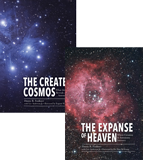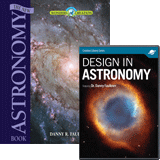Lithium-Rich Stars Confound Astronomers
In a recent paper published in the Astrophysical Journal Letters,1 a team of Chinese and Japanese astronomers reported on high-lithium concentrations in 12 newly discovered low-mass, metal-poor,2 main-sequence, and red giant stars in the Milky Way halo. All of the stars have larger than expected excesses of lithium (Li), and one star has more than 100 times higher Li abundance than the normally expected values, which is the largest excess in such metal-poor stars known to date. The Li content was determined using spectroscopic analysis, and standard abundance analysis was carried out using local thermodynamic equilibrium (LTE) and checked against nonlocal thermodynamic equilibrium (NLTE) model stellar photospheres.
Mechanisms for Lithium Enrichment in Stars
Li-rich stars are much more commonly detected in red giant stars. This is probably because of the higher luminosity of red giants as compared to main-sequence stars, not necessarily a result of higher frequency in red giants. Additionally, in the stellar evolutionary model, many AGB (asymptotic giant branch) stars have been found to have higher Li levels. It is hypothesized that the Cameron-Fowler mechanism is mostly responsible, which to state in the simplest of terms requires extremely high temperatures around the core of the star to convert beryllium into lithium3 and fast mixing from the core through the outer envelope to bring the lithium to the surface. But in main-sequence stars and red giant branch stars (the more common type of red giants), this mechanism is not available.
There are several proposed mechanisms and scenarios which could account for high Li concentrations in non-AGB stars: extra mixing in red giants, absorbing rocky planets, comets and asteroids, stealing Li from Li-rich AGB stars, receiving Li from novae and supernovae, and other potential scenarios. But none of these other mechanisms fit the current stars in this study.
Making the Exception the Standard?
One of the subgiants in the study (J0741+2132) had a lithium abundance of A(Li)= 4.5 (corresponding to about 100 times more lithium than expected, while most of the others were in the A(Li)= 2.5-3.5 range.4 Interestingly, even though there appears to be no mechanism that allows for this amount of lithium in a metal-poor, low-mass star, the researchers decided to examine whether a star with this much Li abundance could be the precursor to others in the A(Li)= 3.0 range. Assuming that all of these stars started out with an A (Li)= 4.5, researchers calculated that after the first dredge up (mixing of the Li-containing layer with the Li-free layer of the outer surface) the lithium abundance would dilute on the surface from 4.5 to ~ 3.0, which fits most of the other stars studied. They therefore concluded that this model provided a natural explanation for the presence of Li-rich objects at any evolutionary stage.
There’s a major problem here though. If the suggested interpretation of the studied stars is correct, they still have not identified the source of the extremely large Li-excess in stars like J0741+2132. They have merely taken what they have observed as an outlier and used it to interpret the Li abundances in other stars.
Never Fear, Rescuing Device Is Here
Since no significant internal mixing is expected in such “unevolved” stars within the framework of standard stellar evolution theory, Li production by the Cameron-Fowler mechanism in such a star is very unlikely. Other models such as planet absorption are also unlikely due to its low-metal composition not being amenable to planetary formation around it in the evolutionary paradigm. Plus the amount of lithium is still too high even in this unlikely scenario. There also appears to be no nearby AGB or white dwarf stars which J0741+2132 could leach Li from. Nova explosions have been proposed as a last-ditch mechanism, but even the authors admit that this is a stretch, especially as other metals like C, Na, Mg, and Ba do not appear to be significantly enriched, as one would expect if the Li in this star were acquired via accretion from nova material.
Lastly, the authors propose a radical (and highly improbable) solution. Going back to a form of planetary accretion, they propose merging events (basically collisions with planets or other smaller rocky bodies) are the cause for the high lithium abundance of star J0741+2132. These types of events would cause mixing from within the star, and might induce the Cameron-Fowler mechanism. But such planetary strikes might also cause high rotational velocity on the impacted star, which is not observed with J0741+2132. Never fear though, because even though this is a main sequence sub-giant star the proposed collisions might be old enough that the star’s rotation has slowed down since the merging event took place.
Let Us Hear the Conclusion of the Whole Matter
The authors of the paper conclude with the following remarks:
The existence of Li-rich stars indicates that there are still unknown processes in low-mass star evolution, even in the phase before they evolve into red giants, the study of which is usually regarded as a well-established field in astrophysics. Solving the mystery of their origin will provide new insight into the structure and evolution of low-mass stars, which could propagate in the studies of planetary systems and of Galaxy formation based on observations of low-mass stars.5
It is not a battle over evidence, it is a battle over worldviews.
Obviously there are always going to be unknowns in any scientific field. As finite humans we are never going to have perfect knowledge. But as we have stated numerous times on our website, it is not a battle over evidence, it is a battle over worldviews. Did you notice that in their conclusion the authors are also exhibiting something that the atheist/secular humanist worldview totally denigrates—faith? The second listed definition of faith, according to dictionary.com, is “belief that is not based on proof.”6 These authors have no proof that there is an unknown process in low-mass star evolution accounting for Li abundance. They have no proof that even if that were the case and they solved that “mystery” that it would provide further insight into stellar evolution. Most importantly, they have no proof of stellar evolution. Yes, they have hypotheses, and they certainly have beliefs about how low-mass stars evolved, but these are not proofs. Consequently, for secularists to ridicule Christians for exhibiting and invoking faith while doing the exact same thing themselves seems rather disingenuous.
What Is the Creation Worldview Response?
There is nothing about lithium-abundant stars that does not fit within a creation cosmology. For instance, though it goes largely unnoticed and unmentioned by most astronomers, the sun has unusually low lithium abundance. Solar abundance of lithium is much less than supposedly similar population I stars, being in line more with extreme population II stars.7 Additionally, while some stars seem to have too much lithium, the amount of lithium in the universe appears to be drastically lower than the big bang model predicts.8 Creation astronomers have also admitted that these lithium issues are as yet unexplained in a creation cosmology, but just like their secular colleagues, encourage continued observation and data collection.
But creationists can offer a more cogent explanation for such things. We have an eyewitness account of the stars’ creation recorded in Scripture (Genesis 1:16) They are not billions of years old, but only a few thousand years. And they have not undergone several dredge ups which would have diffused their lithium, but still have lithium because they were created that way and are young. And creationists do not expect homogeneity in stellar objects or processes. Scripture even states that stars differ in glory (and one could readily conclude that this would include metallicity, since that is one of many properties that affects brightness).
There is one glory of the sun, another glory of the moon, and another glory of the stars; for one star differs from another star in glory. (1 Corinthians 15:41, NKJV)
As Dr. Elizabeth Mitchell has stated, “Taking a biblical stand does not undermine science; it illuminates science, just like reliable eyewitness testimony enables a detective to correctly interpret the circumstantial evidence at the scene of a crime. Furthermore, evolutionists have their own ‘god of the gaps.’ The evolutionary ‘god of the gaps’ consists of time, chance, and the laws of nature, which alone do not and cannot explain the incredible design of living and fossilized creatures or the massive geological formations [or as in the case of this news item, stellar formations] that we see across the world [or universe]. But the intelligent, holy, sovereign God of the Bible and His acts in history (as recorded in the Bible) can and do explain incredibly well what we observe.”9
As we study the stars, we are to marvel in their beauty, appreciate the differences in them, recognize that they are for signs and seasons and give light on the earth. But we are also to look at them as signposts which point us to a greater reality.
When I consider Your heavens, the work of Your fingers, the moon and the stars, which You have ordained, what is man that You are mindful of him, and the son of man that You visit him? (Psalm 8:3–4, NKJV)
The greater reality is that God created the heavens and the earth. That somehow God is still mindful of mankind even though he created billions of galaxies and trillions of stars through the Son (John 1:1–3; Colossians 1:16). And even more amazing is that God has visited man as the God-man Christ Jesus, who came to reconcile us back to God (Colossians 1:19–20). While studying the lithium content of certain stars is an important scientific endeavor, it pales into insignificance next to the most important questions we should be asking: who is God and what does he want from me?
Author’s Note: The author is grateful for the assistance of AiG’s astronomer Dr. Danny Faulkner in writing this article.
Footnotes
- Haining Li et al., “Enormous Li Enhancement Preceding Red Giant Phases in Low-mass Stars in the Milky Way Halo*,” The Astrophysical Journal Letters 852, no. 2 (January 12, 2018): doi:10.3847/2041-8213/aaa438.
- In astronomy and astrophysics, a metal is any element heavier than helium. All of the stars in this study had a metallicity of ([Fe/H]< −1.7), meaning that they have a metallicity of only one-fiftieth or 2% of the amount of the sun.
- Juliana Sackmann and Arnold I. Boothroyd, “The Creation of Superrich Lithium Giants,” Astrophysical Journal 392 (1992): doi:10.1086/186428.
- “Abundance data are presented by A(Li) = log(NLi/NH) + 12 for Li, and [X/Y]= log(NX/NY) − log(NX/NY)⊙ for elements X and Y.” Haining Li et al., “Enormous Li Enhancement Preceding Red Giant Phases in Low-mass Stars in the Milky Way Halo*.”
- Ibid.
- Dictionary.com, s.v. “faith,” http://www.dictionary.com/browse/faith.
- Danny Faulkner, “Not Just Another Star,” Answers 9, no. 1 (January 2014): https://answersingenesis.org/astronomy/sun/not-just-another-star/.
- Danny Faulkner, “The Primordial Lithium Problem,” Answers in Depth 10 (2015): https://answersingenesis.org/astronomy/age-of-the-universe/the-primordial-lithium-problem/.
- Elizabeth Mitchell, “Evolutionary Call to Arms,” Answers in Genesis, June 1, 2012, https://answersingenesis.org/creation-vs-evolution/evolutionary-call-to-arms/.
Recommended Resources

Answers in Genesis is an apologetics ministry, dedicated to helping Christians defend their faith and proclaim the good news of Jesus Christ.
- Customer Service 800.778.3390
- © 2024 Answers in Genesis







